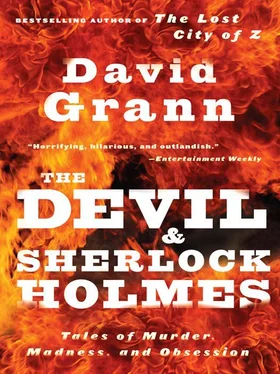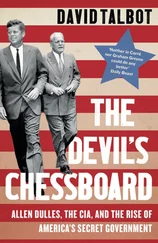Webb repeated for her what he had said in court: he had passed by Willingham’s cell, and as they spoke through a food slot Willingham broke down and told him that he intentionally set the house on fire. Gilbert was dubious. It was hard to believe that Willingham, who had otherwise insisted on his innocence, had suddenly confessed to an inmate he barely knew. The conversation had purportedly taken place by a speaker system that allowed any of the guards to listen—an unlikely spot for an inmate to reveal a secret. What’s more, Webb alleged that Willingham had told him that Stacy had hurt one of the kids, and that the fire was set to cover up the crime. The autopsies, however, had revealed no bruises or signs of trauma on the children’s bodies.
Jailhouse informants, many of whom are seeking reduced time or special privileges, are notoriously unreliable. According to a 2004 study by the Center on Wrongful Convictions, at Northwestern University Law School, lying police and jailhouse informants are the leading cause of wrongful convictions in capital cases in the United States. At the time that Webb came forward against Willingham, he was facing charges of robbery and forgery. During Willingham’s trial, another inmate planned to testify that he had overheard Webb saying to another prisoner that he was hoping to “get time cut,” but the testimony was ruled inadmissible, because it was hearsay. Webb, who pleaded guilty to the robbery and forgery charges, received a sentence of fifteen years. Jackson, the prosecutor, told me that he generally considered Webb “an unreliable kind of guy,” but added, “I saw no real motive for him to make a statement like this if it wasn’t true. We didn’t cut him any slack.” In 1997, five years after Willingham’s trial, Jackson urged the Texas Board of Pardons and Paroles to grant Webb parole. “I asked them to cut him loose early,” Jackson told me. The reason, Jackson said, was that Webb had been targeted by the Aryan Brotherhood. The board granted Webb parole, but within months of his release he was caught with cocaine and returned to prison.
In March, 2000, several months after Gilbert’s visit, Webb unexpectedly sent Jackson a Motion to Recant Testimony, declaring, “Mr. Willingham is innocent of all charges.” But Willingham’s lawyer was not informed of this development, and soon afterward Webb, without explanation, recanted his recantation. When I recently asked Webb, who was released from prison in 2007, about the turnabout and why Willingham would have confessed to a virtual stranger, he said that he knew only what “the dude told me.” After I pressed him, he said, “It’s very possible I misunderstood what he said.” Since the trial, Webb has been given an additional diagnosis, bipolar disorder. “Being locked up in that little cell makes you kind of crazy,” he said. “My memory is in bits and pieces. I was on a lot of medication at the time. Everyone knew that.” He paused, then said, “The statute of limitations has run out on perjury, hasn’t it?”
Aside from the scientific evidence of arson, the case against Willingham did not stand up to scrutiny. Jackson, the prosecutor, said of Webb’s testimony, “You can take it or leave it.” Even the refrigerator’s placement by the back door of the house turned out to be innocuous; there were two refrigerators in the cramped kitchen, and one of them was by the back door. Jimmie Hensley, the police detective, and Douglas Fogg, the assistant fire chief, both of whom investigated the fire, told me recently that they had never believed that the fridge was part of the arson plot. “It didn’t have nothing to do with the fire,” Fogg said.
After months of investigating the case, Gilbert found that her faith in the prosecution was shaken. As she told me, “What if Todd really was innocent?”
In the summer of 1660, an Englishman named William Harrison vanished on a walk, near the village of Charingworth, in Gloucestershire. His bloodstained hat was soon discovered on the side of a local road. Police interrogated Harrison’s servant, John Perry, and eventually Perry gave a statement that his mother and his brother had killed Harrison for money. Perry, his mother, and his brother were hanged.
Two years later, Harrison reappeared. He insisted, fancifully, that he had been abducted by a band of criminals and sold into slavery. Whatever happened, one thing was indisputable: he had not been murdered by the Perrys.
The fear that an innocent person might be executed has long haunted jurors and lawyers and judges. During America’s Colonial period, dozens of crimes were punishable by death, including horse thievery, blasphemy, “man-stealing,” and highway robbery. After independence, the number of crimes eligible for the death penalty was gradually reduced, but doubts persisted over whether legal procedures were sufficient to prevent an innocent person from being executed. In 1868, John Stuart Mill made one of the most eloquent defenses of capital punishment, arguing that executing a murderer did not display a wanton disregard for life but, rather, proof of its value. “We show, on the contrary, most emphatically our regard for it by the adoption of a rule that he who violates that right in another forfeits it for himself,” he said. For Mill, there was one counterargument that carried weight—“that if by an error of justice an innocent person is put to death, the mistake can never be corrected.”
The modern legal system, with its lengthy appeals process and clemency boards, was widely assumed to protect the kind of “error of justice” that Mill feared. In 2000, while George W. Bush was governor of Texas, he said, “I know there are some in the country who don’t care for the death penalty, but … we’ve adequately answered innocence or guilt.” His top policy adviser on issues of criminal justice emphasized that there is “super due process to make sure that no innocent defendants are executed.”
In recent years, though, questions have mounted over whether the system is fail-safe. Since 1976, more than a hundred and thirty people on death row have been exonerated. DNA testing, which was developed in the eighties, saved seventeen of them, but the technique can be used only in rare instances. Barry Scheck, a co-founder of the Innocence Project, which has used DNA testing to exonerate prisoners, estimates that about eighty per cent of felonies do not involve biological evidence.
In 2000, after thirteen people on death row in Illinois were exonerated, George Ryan, who was then governor of the state, suspended the death penalty. Though he had been a longtime advocate of capital punishment, he declared that he could no longer support a system that has “come so close to the ultimate nightmare—the state’s taking of innocent life.” Former Supreme Court Justice Sandra Day O’Connor has said that the “execution of a legally and factually innocent person would be a constitutionally intolerable event.”
Such a case has become a kind of grisly Holy Grail among opponents of capital punishment. In his 2002 book “The Death Penalty,” Stuart Banner observes, “The prospect of killing an innocent person seemed to be the one thing that could cause people to rethink their support for capital punishment. Some who were not troubled by statistical arguments against the death penalty—claims about deterrence or racial disparities—were deeply troubled that such an extreme injustice might occur in an individual case.” Opponents of the death penalty have pointed to several questionable cases. In 1993, Ruben Cantu was executed in Texas for fatally shooting a man during a robbery. Years later, a second victim, who survived the shooting, told the Houston Chronicle that he had been pressured by police to identify Cantu as the gunman, even though he believed Cantu to be innocent. Sam Millsap, the district attorney in the case, who had once supported capital punishment (“I’m no wild-eyed, pointy-headed liberal”), said that he was disturbed by the thought that he had made a mistake.
Читать дальше











